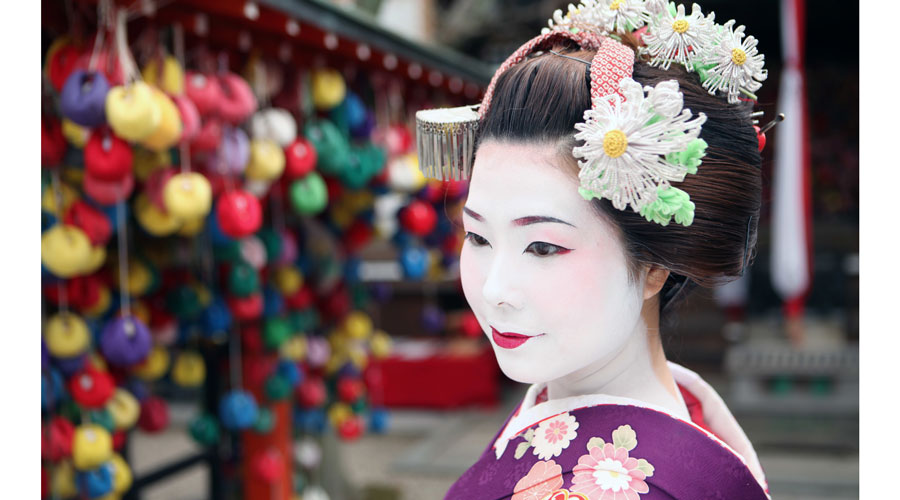
Dwindling in number, today’s geisha are the careful keepers of a centuries old form of entertainment. These magical performing artists are held in very high esteem in Japanese culture, and it is considered a great honour to be one since the seemingly glamorous life of a Geisha is not easy. Many women who enter into training do not complete it due to the rigorous nature of the work and high standards of perfection.
Strict training
Contrary to popular belief, geisha are not courtesans. They are highly educated entertainers who undergo very strict training in the traditional Japanese arts and are paid for their social company. The word “geisha” literally means “performing artist.” It takes them many years to be transformed into living works of art. In fact, training to become a geisha takes as long as it takes to become a doctor! Young ladies spend about six years studying the arts of music, dance, hostessing, language, the art of conversation and tea ceremony. Geisha continue studying throughout their career to improve upon and expand their skills. They live by very strict rules and work incredibly hard during their careers.
Most of the time, geisha start their day around 4pm and work late into the night, visiting several different and very exclusive teahouses to entertain important men who have enough money and influence to reserve geisha and the expenses that come with their presence (transportation, bar tab, food). It is very difficult to spend time being entertained by a geisha—you need to know influential people who can vouch for you to get in.
Geisha costume
The white face, elaborate hairstyle and tall wooden clogs that are usually associated with geisha are actually worn by maiko, geisha in training. Once a woman graduates to becoming a geisha, her makeup and hair is plainer since she herself is the entertainment and not her appearance.
Geisha wear colourful kimono tied with an ornate obi sash around the waist with a fancy knot in the back. Styles and patterns depend on the wearer’s age, the event and time of year. On their feet, geisha wear tabi, which are white socks with a split toe. Their shoes are flat soled sandals called zori. Their clothing, jewellery and other decorations are worth a lot of money and are part of why geisha are so rare to see. These valuables must be kept safe among people who can be trusted.
Seeing real Geisha
Geisha sightings are actually very rare. To get a glimpse, you have to have a lot of luck and know where to go. The city of Kyoto is where the most geisha live, but that doesn’t mean you’ll be able to see one. Even though there is a concentration of geisha in Kyoto, there are still only under 100 of them. Many Japanese people living in Kyoto haven’t even caught so much as a glimpse of these mysterious women who silently slide out of taxis and disappear behind very discreetly marked wooden doors. Geisha generally take Sundays off and go out wearing normal street clothes. You could find yourself in Japan shopping right next to one and not even know it!

